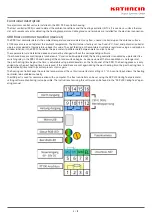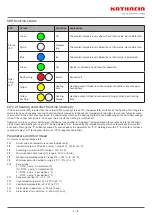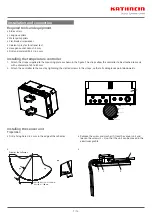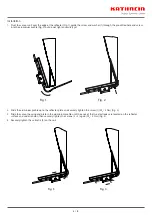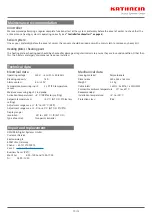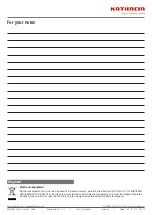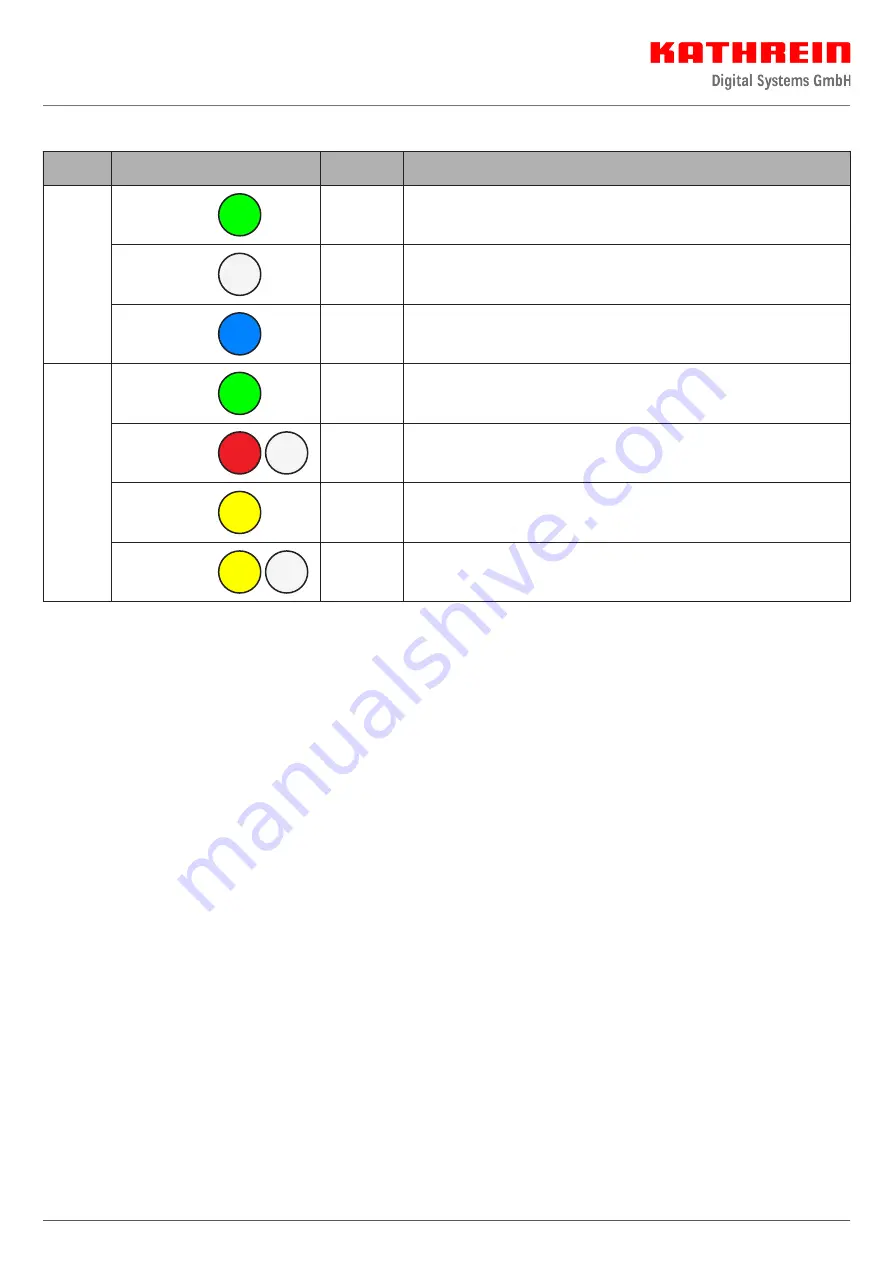
5 / 12
SRR function status
LED
Colour
Condition
Explanation
Status
LED
Green
OK
The ambient temperature is above the set limit value. No ice detected.
White
Tempera-
ture
The ambient temperature is below the set limit value. No ice detected.
Blue
Ice
The ambient temperature is below the set limit value. Ice detected.
Oper-
ating
LED
Green
ON
Device is switched on and ready for operation.
Red flashing
Alarm
Sensor fault
Yellow
Heating
Auto
Heating output ON due to current ambient conditions or active post
heating time.
Yellow
flashing
Heating
Manual
Heating output ON due to manual switching or active post heating
time.
ELTC 21 heating controller function (device 2):
If the actual value (P01) is lower than the setpoint (P10 minus hysteresis P11), the power relay switches on the heating. The integrated
alarm relay has a changeover contact that allows fault messages in the event of temperature too high / low, sensor failure or sensor
short circuit. In the event of sensor faults, the control relay switches the heating cable off or on depending on the controller configu-
ration. If the sensor fails or there is a sensor short circuit, the heating is switched off.
Operation is very easy. After switching on, the device type number (C-2) appears, followed around three seconds later by the meas-
ured actual value. Briefly pressing the “P” button displays “Set”, followed by the setpoint display, which automatically reverts after
5 seconds. Pressing the “P” button for around 3 seconds opens the parameter list “P10”. Holding down the “P” button for a further 3
seconds displays “dC” for degrees Celsius or “dF” for degrees Fahrenheit.
Parameters and their mean
H = Device 2 heating temperature
P01
Actual value on temperature sensor (number only)
P10
Controller setpoint, effective on relay 1, range P13...P14 [H +40 °C]
P11
Switching hysteresis of P10, range 2...10K, [H 2K]
P12
Minimum down time (relay K1); range 0...30 min, [5 min]
P13
Maximum permitted setpoint, range P14...+390 °C, [H +60 °C]
P14
Minimum permitted setpoint, range -50 °C...P13, [H -5 °C]
P20
Sensor type
0 = Pt100, 3-wire, °C (resolution 1K)
[1] = Pt100, 2-wire, °C (resolution 1K)
2 = Pt100, 3-wire, °F (resolution 2°F)
3 = Pt100, 2-wire, °F (resolution 2°F)
P21
Sensor correction -30...+10 K, [0]
P30
High temperature alarm, P31...400°C [60 °C]
P31
Low temperature alarm, -60...P30 [-60 °C]
P32
Alarm delay in operation, 0...99 min [0 min]
P33
Alarm delay after switch on, 0...500 min [0 min]




